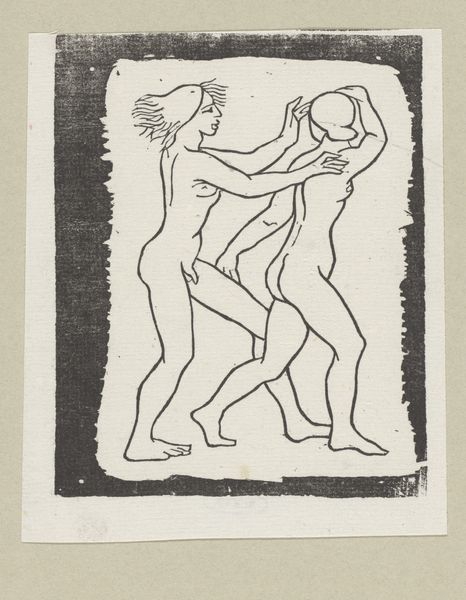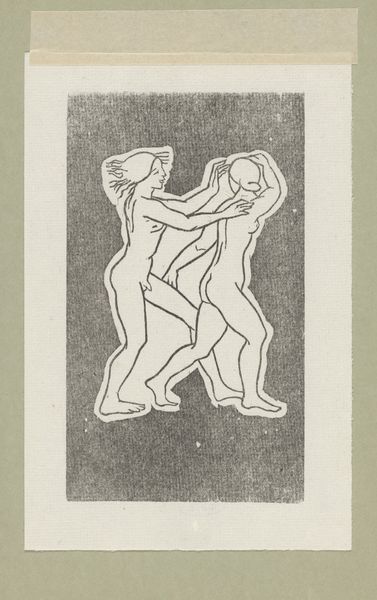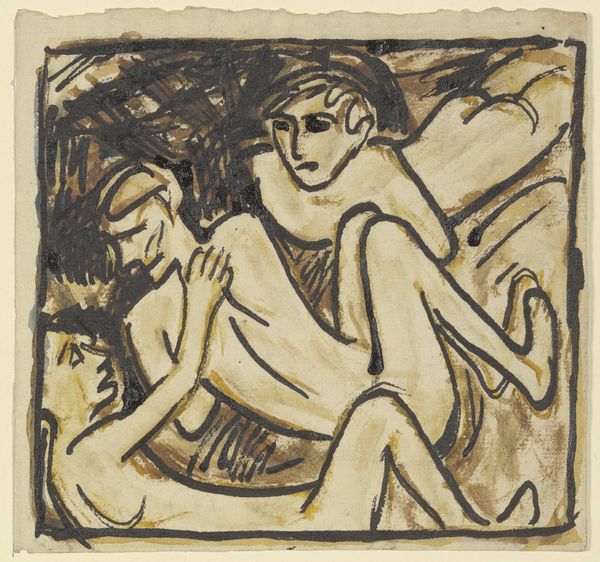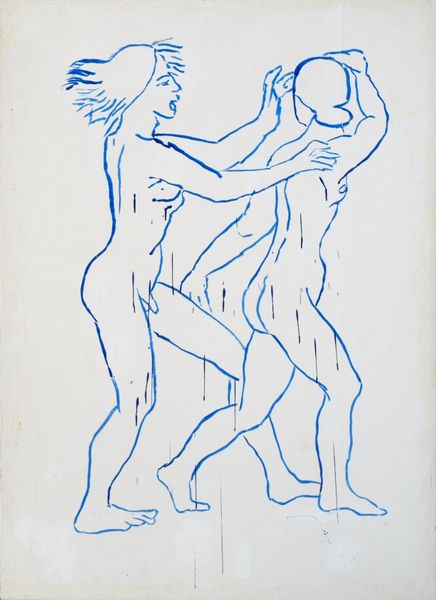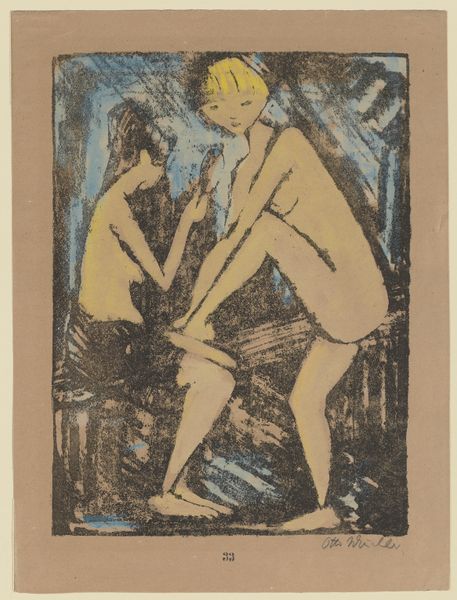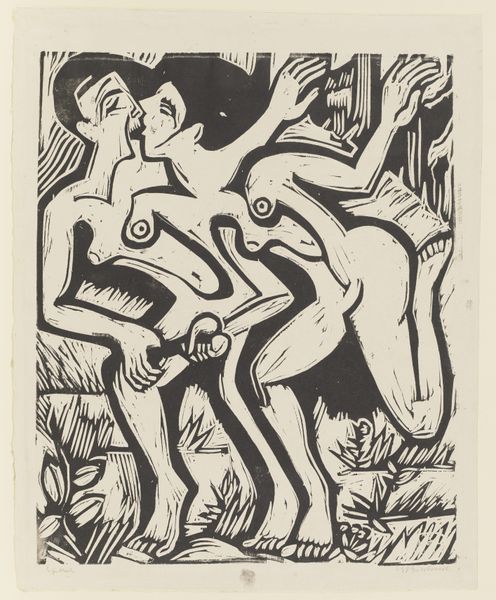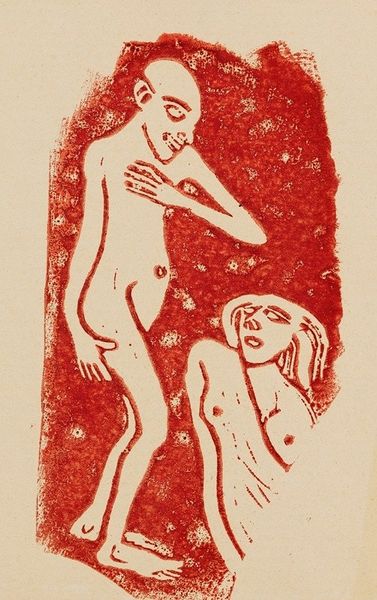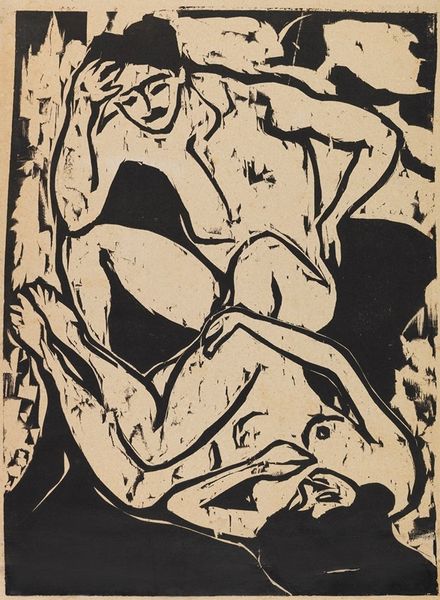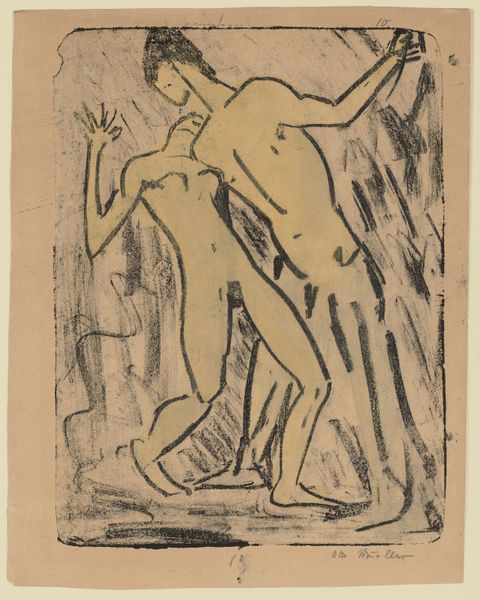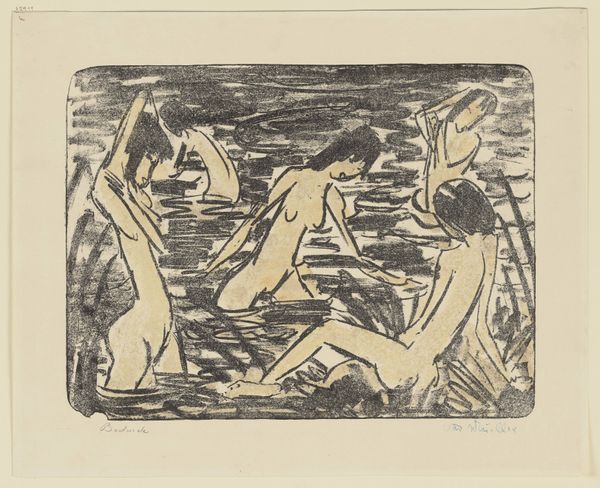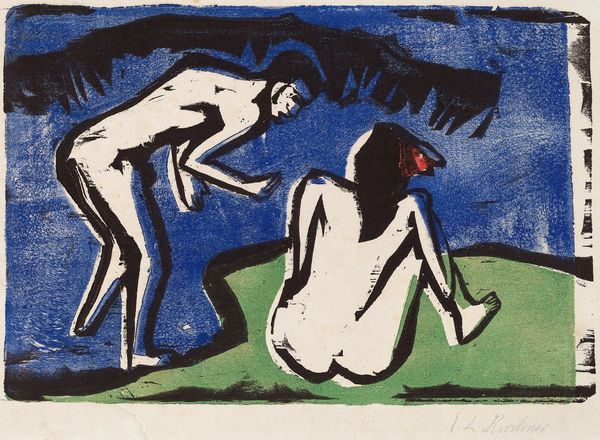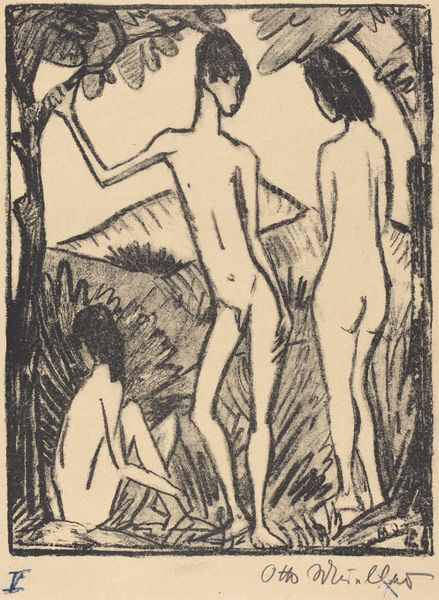
print, woodcut
#
ink drawing
# print
#
pen sketch
#
figuration
#
abstract
#
geometric
#
expressionism
#
woodcut
#
line
#
nude
Copyright: Public Domain: Artvee
Curator: Christian Rohlfs' 1913 woodcut, "Zwei Tanzende," offers a raw, energetic glimpse into human form. The stark black lines create two abstracted figures within a tightly cropped frame. What's your initial reaction to this piece? Editor: My gut says this is all about joyful liberation! The figures seem caught in mid-movement, like a primal expression breaking free. I get the urge to just start moving without thinking! It's wonderfully unsettling, but in an exhilarating way. Curator: I agree! It’s interesting to examine how Rohlfs’ deliberate use of line contributes to this sensation. See how the jagged, almost frantic lines carve out these bodies? This isn’t about anatomical accuracy, it's about conveying pure energy, distilling the essence of movement itself. He seems to be wrestling with form in a way that echoes the emotional intensity of the Expressionist movement. Editor: Absolutely. He almost violently simplifies everything. And look at how the geometric abstraction battles with the representational, creating tension, an ambiguity of the figures, of bodies barely being bodies... Curator: Which leads us to think more symbolically about their form... Notice how the dense, dark patches contrast with expanses of untouched white? This bold interplay creates depth, rhythm, and a fascinating dialogue between presence and absence. It mirrors, I think, the very act of dancing. You're present, and then you're gone. Editor: Hmmm… a transient moment of physicality seized from ephemerality through these rigid strokes of bold intent. I have to say, it’s rather successfully capturing the intensity of a momentary happening that cannot quite be put into concrete still image. But I think there's also a hint of vulnerability, exposing the figures bare in an unvarnished moment... a bit too harsh perhaps, too devoid of compassion. Curator: I perceive a hint of defiance in this exposure—an unyielding assertion of self! Rohlfs avoids any softness, opting instead for angularity. This intentional rigidity compels the viewer to acknowledge their bodies stripped down with fierce and perhaps defiant pride. Editor: Well, for me, "Zwei Tanzende" lands as an explosion of impulsive expression and feeling – an immediate transmission. And that to me is the joy of a woodcut that is made with intent and vision. Curator: And through Rohlfs’ visual language and raw execution we’re presented not just with dancers, but perhaps, also with humanity at its most sincere, wild, and beautifully imperfect core.
Comments
No comments
Be the first to comment and join the conversation on the ultimate creative platform.
